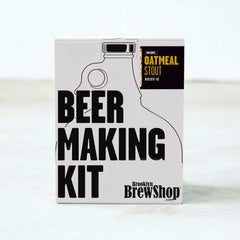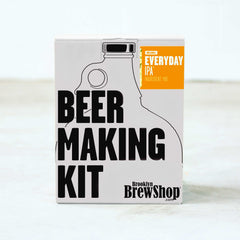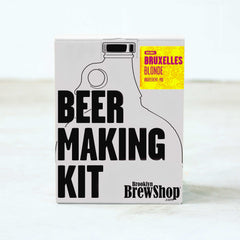2 O’Clock Tasting:
pFriem Family Brewers
"Op uw gezondheid" is the motto of pFriem Family Brewers, a Dutch phrase with tricky pronunciation and a simple, honest meaning: "To your good health." The use of such a statement perfectly encapsulates pFriem's brand, aesthetic and ideology. The brewery is located in Hood River, Ore., just south of the Washington state border, and in their mission statement, they describe their beers as "artisanal," influenced by "the great brewers of Belgium" and dedicated to their "homegrown roots in the Great Pacific Northwest." From the label to the taste, every pFriem beer showcases its commitment to simple excellence.
Started in 2012, the brewery is run by the intentionally-elusive son of the pFriem family whom the site refers to only by surname. Along with his business partners Ken Whiteman and Rudy Kellner, "pFriem" embarked on the quest to establish his own proper brewery after a decade of celebrated inclusion in the Northwest craft brewing community. The brewery prides itself on its strong family focus and community involvement, as well as its ingredients - while many craft brewery websites list the notable spices and hops used in their brews, none we've encountered boast the encyclopedic cataloging of every ingredient the way pFriem does.
For our tasting, we sampled two brews from pFriem's standard Classic collection, the Pilsner and the Wit, and two from their more elusive, cork-bottle Select series, the Saison and the Blonde. Read on to demystify these as-yet hard-to-find brews for us East Coast drinkers, and feel free to chime in with any other Seattle-area brews worth talking about.
-
Pilsner
38 IBUs | 4.9% ABV Upon pouring, most of the tasters around the table immediately remarked that, visually, the pFriem Pilsner may be the lightest beer we've ever seen. It poured with a delicate green tint, a fluffy white head, and a crystal-clear complexion. Pastoral aromas of flowers and meadow grains combined nicely with a typical maltiness to provide what the group could only describe as a "pilsner" scent. The taste was the best part, though, with a deep dryness at the back of the mouth and the faint minerality that's so crucial to a pilsner. Though it's a term with varying meaning, we all agreed that it was highly "drinkable," and perhaps dangerously so—with its lovely front end and low carbonation, pFriem's Pilsner goes down easy as a breeze. -
Wit
18 IBUs | 5.1% ABV Color-wise, the Wit turned out to be actually lighter than the Pilsner, boasting a white-gold hue but exchanging the latter's clarity for a thick haziness. Though it also poured a foamy head, we agreed that "pear cider" was an apt visual comparison. However, the nose evoked images of a bakery, containing scents of apple, cardamom, and flour. This pastry sensation followed through on the tongue, with a thick mouthfeel and lemony creaminess that lingered pleasantly in the mouth long after each taste. Considering the Wit's dessert qualities, the sweetness was also subtler than expected, rounding out this highly balanced brew. -
Saison
32 IBUs | 6.5% ABV While the Wit stored all the lemon flavor, the Saison kept all the visuals, with a hazy, dark yellow color and surprisingly foamy off-white head. Those citrus notes were also present in the aroma, mixed with a touch of salty sweetness and a pervasive cleanliness that inspired a comparison to Orange Pledge. After all that, then, the Saison surprised us by being astonishingly dry, nearly spicy. The taste contained more layers than that, however, with a fruitiness in the middle and an elusive note reminiscent (for some) of biscuit dough. The Saison finished big and bitter, a strong end to this deceptively potent and flavorful brew. -
Belgian-Style Strong Blonde Ale
30 IBUs | 7.5% ABV Though it has the most complicated name, the Belgian-Style Strong Blonde Ale (BSSBA) had the most normative appearance. "Oh," we said, as we poured it out. "It looks like beer." That description might seem a tad tautological, but with a clear, bubbly, golden color, the BSSBA just fits the mental image of what a normal beer looks like. Its other qualities, then, were even more surprising - especially the nose, which smelled like one thing and one thing only: a juice box. Seriously, we briefly thought maybe we had opened some beverages from Tree Top or Juicy Juice. Thankfully, the taste dispelled this notion, with a thick, cakey flavor that contained hints of cloves and a more nuanced sweetness than the aroma. With these potent flavors and a 7.5% ABV, the BSSBA is not a beer to be taken lightly (though it's certainly worth the risk).
Shop Beer Making Kits
We make all-grain beer brewing kits that make it easy to make beer at home. Whether it's your first batch or your hundredth.







